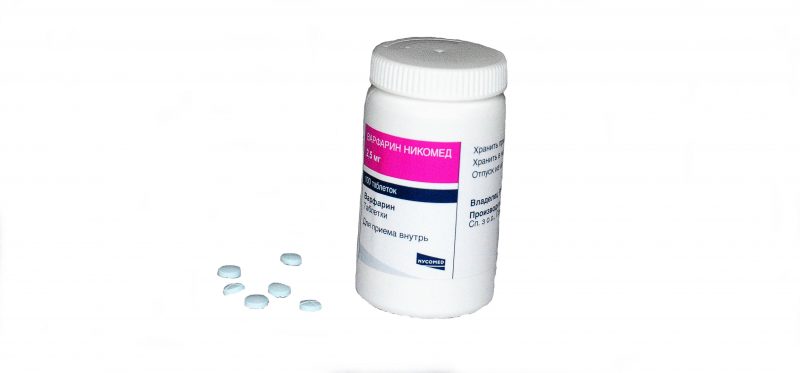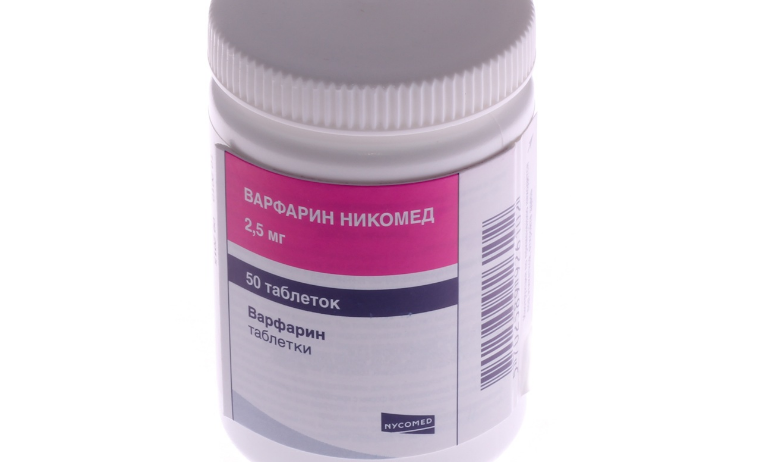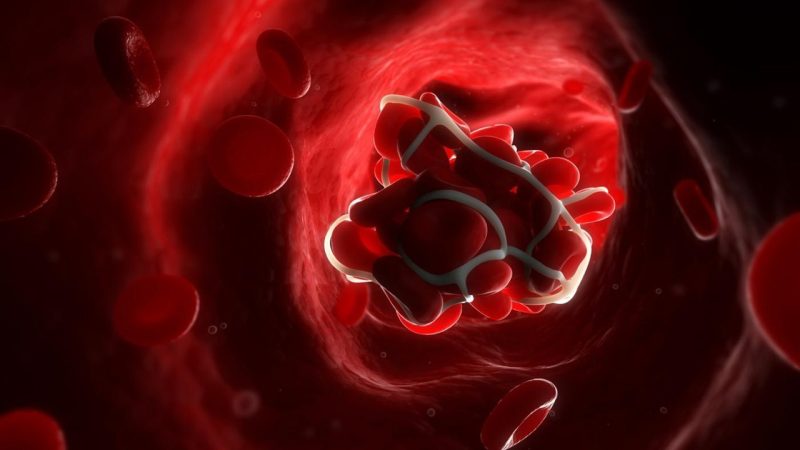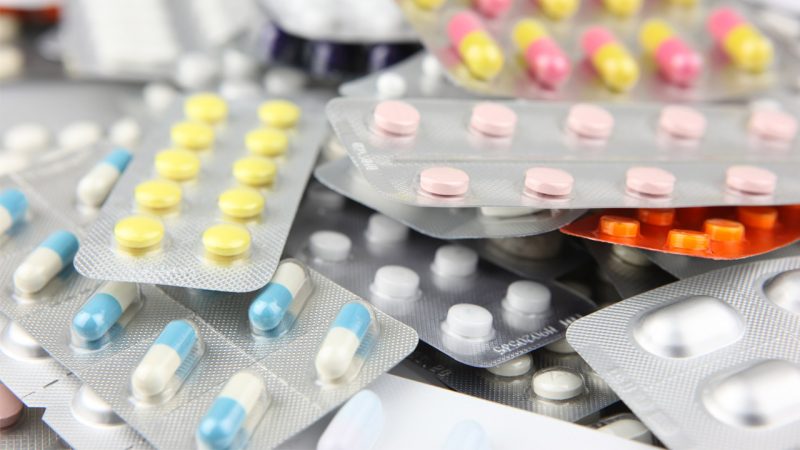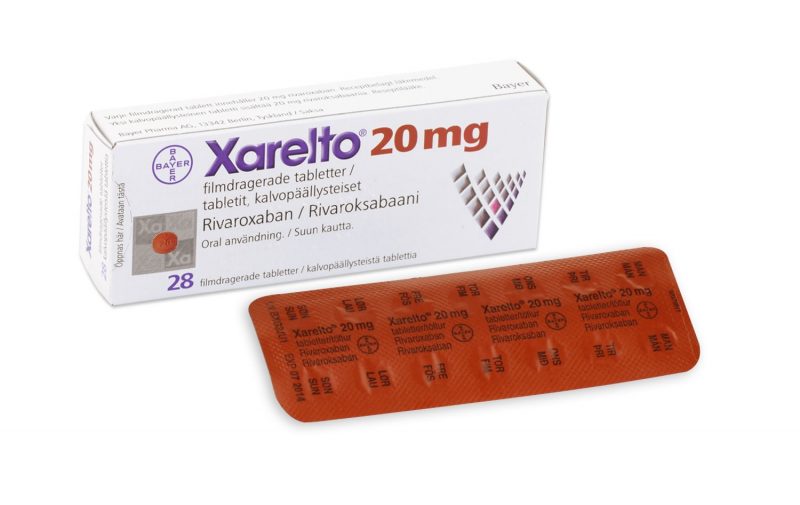Initially, warfarin was used as rat poison, but was soon recognized as an effective anticoagulant and was widely used in medicine. Today, drugs against thrombotic diseases are produced under the same trade name, one of which is Warfarin Nycomed, the most common in Russia and the CIS.
Material Content:
- 1 Composition, release form and packaging
- 2 Pharmacological action, pharmacodynamics and pharmacokinetics
- 3 In what cases is Warfarin Nycomed prescribed
- 4 Instructions for use and dosage
- 5 During pregnancy and lactation
- 6 Drug interaction
- 7 Alcohol compatibility
- 8 Contraindications, side effects and overdose
- 9 Indirect anticoagulant analogues
Composition, release form and packaging
The drug is available in the form of small tablets, convex on both sides. Color - bluish, each has a cruciform dash. Dragee is in a small plastic bottle, which is enclosed in a cardboard box. An annotation is attached here with all the information necessary for the consumer.
The main substance is the anticoagulant warfarin sodium, which in each tablet contains 2.5 mg. As additional substances, the composition added lactose, magnesium stearate, polyvinylpyrrolidone, indigotine (due to which the product has a specific color), calcium hydrogen phosphate, corn starch.
Pharmacological action, pharmacodynamics and pharmacokinetics
The discovery of anticoagulants was associated with the massive death of cattle. In animals, a disease caused by severe internal bleeding was found. Subsequently, it turned out that in the livestock food there were substances that disrupted the blood coagulation mechanism.
Warfarin slows down or stops the production of K-dependent factors - proteins in the blood plasma, which are responsible for the blood coagulation process. It blocks the formation of prothrombin (second factor), proconvertin (seventh), Christmas factor, and Stuart-Praer in the liver. When their plasma content is low, blood coagulates at times slower.
Warfarin is a drug whose effect is visible only 36 hours after the start of administration, sometimes more time is needed. The maximum amount of anticoagulant is detected in the body after 5-7 days. After completion of therapy, the effect of the drug is observed for another 3-5 days.
This substance is called racemic. It is represented by two isomers: levorotatory S-warfarin, which is 2-5 times more active than dextrorotatory R-warfarin. The processing catalyst for the former is the CYP2C9 enzyme; for the latter, two other enism, CYP1A2 and CYP3A4. The half-life for the S-isomer is 20-40 hours, for the R-isomer - two times longer, 40-90 hours.
Warfarin breaks down mainly in the liver and is excreted together with urine after reabsorption of two metabolites from bile in the gastrointestinal tract. Binding to plasma proteins in the blood is 97-99%.
In what cases is Warfarin Nycomed prescribed
Warfarin Nycomed tablets are prescribed primarily as part of the prevention and treatment of thrombotic diseases to prevent blood clots by diluting blood.
Indications for use are the following diseases:
- vascular embolism (blockage of the bloodstream by stoppers - emboli), pulmonary artery;
- postoperative, venous, or blood vessel thrombosis;
- prevention of a heart attack with the formation of blood clots;
- thromboembolic formations in the presence of a prosthesis in the heart valve or when it is affected by another disease, with atrial fibrillation (atrial fibrillation);
- prevention of ischemic attacks, heart attacks, strokes.
Instructions for use and dosage
The method of taking Warfarin for people who have not drank this drug varies with doses for patients previously treated with an anticoagulant.
For the first group, in the first 4 days, 5 mg of the drug is usually prescribed (two tablets). After this, it is necessary to determine the INR (International Normalized Ratio) and prescribe a further dose, which is usually 1-3 tablets per day based on the results of the analyzes.
Patients who have already been treated with Warfarin are prescribed a double norm. As in the first case, after the 5th day of therapy, a dose adjustment is performed. Take the drug once a day.
The recommended INR value is 2-3. The indicator of 2.5-3.5 is considered increased and is permissible only in the case of treatment of thrombosis with prosthetics of the heart valve and complicated myocardial infarction. An INR check is carried out before starting therapy, then every 4 or 8 weeks.
Warfarin is used with caution in treating children. When calculating the dose for patients under 18 years of age, a large number of factors are taken into account, the most influential of which is the performance of the liver. So, with the normal functioning of the body, the norm is 0.2 mg of the basic substance per 1 kg of body weight. Children with impaired liver function receive a reduced dose of 0.1 mg / kg.
Recommendations for the use of Warfarin Nycomed depending on the INR indicators are given in the table below.
| Therapy day | INR | The purpose of the drug |
|---|---|---|
| 1 | 1-1,3 | 0.2 mg per 1 kg of weight (loading dose, intake - 1 time per day) |
| 2-4 | 1-1,3 | Half Dose |
| 1,4-1,9 | Dose Repeat | |
| 2-3 | Half Dose | |
| 3,1-3,5 | Quarter of the loading dose | |
| More than 3,5 | Do not take the drug until the INR reaches an indicator of less than 3.5, after which half of the last pleasant dose is prescribed | |
| Supportive reception | 1-1,3 | Increase previous dose by 20% |
| 1,4-1,9 | Increase by 10% | |
| 2-3 | Continue to take the same dose. | |
| 3,1-3,5 | Decrease by 10% | |
| More than 3,5 | Stop taking until an INR of less than 3.5, reduce the dose by 20% |
There are no specific indications for taking the drug in elderly patients. Carefully monitoring INR is necessary for patients with liver diseases (it is it that produces proteins that provide coagulation).
During pregnancy and lactation
Treatment with warfarin is not recommended during pregnancy. The substance easily and quickly penetrates the placenta and is able to act on the fetus from the first weeks.
Perhaps the development of warfarin syndrome in a child, which manifests itself as a series of complex intrauterine disorders:
- 100% - hypoplasia of the nose, pathology of the respiratory system;
- 90% - abnormal development of bone tissue;
- 45% - eye abnormalities, blindness, cataracts, optic atrophy;
- 36% - disorders in the development of the brain, mental retardation;
- 27% - retardation in physical development, short neck.
Under the influence of the drug, the risk of internal bleeding in the late stages of bearing a child and during childbirth increases, therefore, during pregnancy, taking Warfarin is strictly prohibited.
But with breastfeeding, the drug is not prohibited - it passes into breast milk, but when taking the recommended doses it does not adversely affect the body of the newborn.
Women who use Warfarin Nycomed must definitely use contraception during sexual intercourse.
Drug interaction
Without a doctor’s prescription, you can’t start taking other drugs with the current treatment with Warfarin Nycomed, since the drug actively reacts with other substances.
The likelihood of bleeding increases significantly when combining an anticoagulant with acetylsalicylic acid, a large amount of NSAIDs (non-steroidal anti-inflammatory drugs), ticlopidine, clopidogrel, high-dose penicillin, dipyridamole, chloramphenicol, cimetidine. The last two drugs are inhibitors of the cytochrome P450 enzyme, which can also increase the risk of severe hemorrhage.
There are also a number of substances that reduce the activity of warfarin.
These include:
- dermatological agents: retinoids, griseofulvin;
- antiviral and antibacterial drugs: rifampicin, nevirapine, nafcillin, dicloxacillin, ritonavir;
- painkillers: rofecoxib, phenazone;
- medicines to eliminate dyspeptic disorders: mesalazine, aprepitant, sucralfate;
- immunosuppressant cyclosporin;
- a drug to reduce the concentration of lipids in the tissues of the body colestyramine;
- diuretics: chlortalidone, spironolactone;
- cardiovascular drugs;
- herbs: ginseng, St. John's wort;
- foods high in vitamins K and C.
Another group is the substances that activate this anticoagulant:
- GIT and SS drugs: omeprazole, cimetidine, glibenclamide, amiodarone, quinidine, propafenone, dipyridamole, diazoxide;
- substances that affect the hematopoietic function of the body: eptifibatide, abciximab, heparin;
- dermatological medicine miconazole;
- agents for the treatment of gout: allopurinol, sulfinpyrazone;
- antiparasitic drugs: levamisole;
- painkillers for muscles and bones: leflunomide, phenylbutazone, paracetamol, NSAIDs;
- immunomodulators: interferon (alpha and beta form);
- anti-infective drugs: tetracycline, penicillin, quinolones, cephalosporin, sulfonamides;
- antifungal drugs: ketoconazole, fluconazole, metronidazole;
- steroid and hormones of systemic effects;
- antidepressants, antiepileptic drugs and direct-acting substances on the central nervous system: tramadol, sertraline, chloral hydrate, fluvoxamine, phenytoin, phosphenytoin;
- cytostatics: trastuzumab, flutamide, tamoxifen, tegafur, methotrexate;
- antimalarial drug - proguanil;
- cranberries, garlic, papaya, sage;
- drinks, quinine content.
Warfarin, in turn, is able to enhance the effect of hypoglycemic drugs.
If the use of an anticoagulant with the above drugs is mandatory, it is necessary to regularly measure INR and precisely follow the recommendations of the attending physician.
Alcohol compatibility
The combined use of alcohol and warfarin is not recommended - ethanol-based drinks can also make blood more sparse.
Subject to all the doctor’s prescriptions, it is allowed to drink 0.5 liters of beer or 0.2 liters of dry wine, but no more. The safest option is to completely eliminate alcohol from use to prevent unwanted effects.
Contraindications, side effects and overdose
During the use of the drug in medical practice, a clear list of contraindications has been formed:
- an allergic reaction to one of the components of the composition;
- chronic or acute liver disease;
- thrombocytopenia (platelet deficiency in the blood);
- deficiency of C- and S-proteins;
- deep damage to the skin, including after surgery;
- stomach ulcer;
- infectious endocarditis;
- esophageal varicose veins;
- intracranial hemorrhage;
- DIC;
- lumbar puncture;
- malignant hypertension;
- hemorrhagic disorders.
Warfarin is an active drug that, in addition to affecting the blood composition, also affects other body systems, and also has an impressive list of side effects. Doctors highlight symptoms that are very common, often, rarely, and very rare.
| Frequency of manifestation | Negative effect |
|---|---|
| Often | Bleeding |
| Often | Allergy to warfarin, dyspeptic disorders |
| Seldom | Skin necrosis, urticaria, redness and itching, vasculitis (inflammation of the blood vessels), violet finger syndrome, increased production of liver enzymes, jaundice |
| Rarely | Gastrointestinal bleeding, melena, cholesterol embolism, palmar-plantar syndrome |
The most common side effect is different bleeding, they occur in 8% of cases of using warfarin for the treatment of thrombotic diseases. Of these, 1% of negative manifestations leads to hospitalization and further treatment, and only 0.25% cause death. The main reason is uncontrolled changes in blood pressure. In order to prevent such complications, it is necessary to carefully monitor the level of INR.
Necrosis is much less common, and in 90% of cases they haunt women. They are characterized as a gradual inflammation, darkening and further death of the skin. The legs and / or buttocks are usually affected, sometimes other parts of the body. Necrosis can be seen from 3 to 10 days of taking Warfarin. Such a violation is associated with a pathological deficiency of proteins S and C. The harmful effect of the anticoagulant is leveled by heparin before the healing of damaged tissues.
In men with atherosclerosis, palmar-plantar syndrome occurs. It appears as skin lesions of a bright red color, usually affecting the palms and feet, causing severe pain. Stopping Warfarin therapy within a few days normalizes the condition.
An overdose almost always entails bleeding. In mild forms of this manifestation, it is recommended to reduce the dose to normalize INR. In more severe conditions, a complete cessation of administration is necessary until the INR is aligned. In complicated bleeding - the introduction of additional coagulation factors, phylloquinone, taking significant doses of activated carbon.
Indirect anticoagulant analogues
Warfarin is an old drug, today there are other drugs that have fewer side effects.
Based on warfarin, but with a more gentle effect, the following drugs have been created:
- Warfarex;
- Marevan.
While taking these drugs, it will also require monitoring of INR and other precautions that are followed during treatment with Warfarin.
Other analogues of Warfrin Nycomed include:
- Paradax
- Xarelto.
The first is a direct thrombin inhibitor, which prevents the formation of blood clots.The second blocks prothrombin and stops the formation of platelets. The main advantage of these two analogues is the absence of the need for INR control, a minimum of side effects. But drugs are not used to get rid of valve disorders.
Warfarin is a highly effective anticoagulant of indirect action, which is prescribed for various forms of thrombosis. The treatment with this drug must be treated with due attention. It has a large number of side effects, even with a one-time departure from these precautions.


